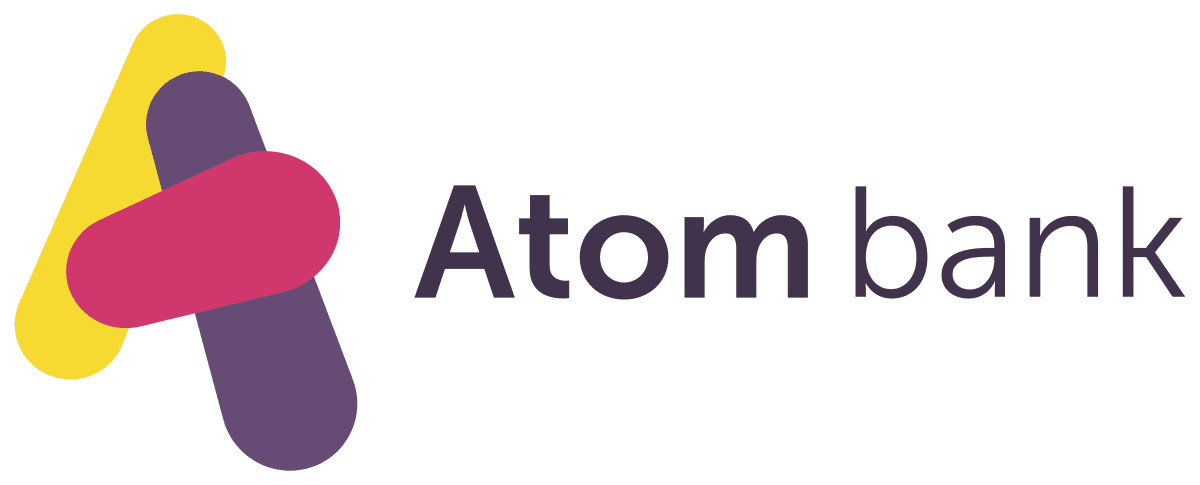Table Of Contents
- 3-Year Fixed Rate Bonds Comparison Table
- TSB 3 Year Fixed Rate Bond - 4.0% AER
- SmartSave - 3-Year Fixed Rate Saver - 4.61% AER
- Tesco Fixed Rate Saver account - 4.15% AER
- Vanquis 3 Year Fixed Rate Bond - AER: 4.05%
- Atom Bank - 3 Year Fixed Saver & Rate Bond - AER: 4.6%
- Close Brothers Savings - 3-Year Saving Account - AER: 4.60%
- RCI Bank UK - 3 Year Fixed Term Savings Account - AER 4.45%
- Are Fixed Rate Saving Accounts Taxable?
- When Is Interest Paid?
- Is It Possible to Withdraw Early?
- Differences Between 1 Year, 2 Years and 3 Years Fixed Rate Bonds
- Fixed Rate Bonds Vs Government Bonds
Exploring the best 3-year fixed-rate bonds in the UK offers investors a unique opportunity to secure stable returns amidst the fluctuating economic landscape, making it a critical consideration for those aiming to optimize their investment portfolios.
After careful research I have found the best and highest yield 3 year savings accounts in UK. Here is a quick list of them:
Quick List of Highest Yield 3 Year Fixed Rate Bonds
TSB 3 Year Fixed Rate Bond - 4.0% AER
SmartSave - 3-Year Fixed Rate Saver - 4.61% AER
Tesco Fixed Rate Saver account - 4.15% AER
Vanquis 3 Year Fixed Rate Bond - AER: 4.05%
Atom Bank - 3 Year Fixed Saver & Rate Bond - AER: 4.6%
Close Brothers Savings - 3-Year Fixed - AER: 4.60%
RCI Bank UK - 3 Year Fixed Term Savings Account - AER 4.45%
Editor’s Pick 3 Year Fixed Rate Bond
Atom Bank's 3-year fixed-rate bond is my pick for a multitude of reasons that extend beyond its appealing 4.6% AER and accessible £50 minimum deposit. This choice is underpinned by Atom Bank's pioneering approach to banking in the United Kingdom, marking it as the nation's first bank designed exclusively for smartphone or tablet use. This digital-only model, devoid of traditional branches, not only reflects a forward-thinking adaptation to modern consumer behavior but also showcases Atom Bank's commitment to innovation and customer convenience. Atom bank has been one of our favourite fixed rate bond issuers in this series of articles as it has also made it to the list about the best 2 year fixed rate bonds as well as 1 year fixed rate bonds. As I've discussed in previous articles about fixed-rate bonds - which are available on my author page - there is no perfect pick when it comes to savings accounts and it all comes down to personal preference. If you think that a great fixed savings account is missing from this article feel free to reach me on my personal LinkedIn or via email (george@wealthyhood.com) to suggest editing.
3-Year Fixed Rate Bonds Comparison Table
Bond Issuer | Minimum Deposit | Maximum Deposit | AER | Interest Payment | Open in |
TSB Bank | £1 | N/A | 4.0% | Monthly, Yearly, Anniversary | Online, In Branch, Phone |
SmartSave | £10,000 | £85,000 | 4.61% | Annually | Online, In Branch |
Tesco Bank | £2,000 | £5,000,000 | 4.15% | Monthly | Online, In Branch |
Vanquis | £1,000 | £250,000 | 4.05% | Annually, Monthly | Online, In Branch |
Atom Bank | £50 | £100,000 | 4.6% | Monthly, Yearly | Online |
Close Brothers | £10,000 | £2,000,000 | 4.60% | Monthly, Yearly | Online |
TSB Bank (2) | £1,000 | £1m | 4.45% | Annually, Term’s end | Online, By Phone |
Read also all the best fixed-rate bonds and savings accounts the in UK.
TSB 3 Year Fixed Rate Bond - 4.0% AER

Minimum Deposit: £1
Maximum Deposit: N/A
AER: 4.0%
Interest Payment: Monthly, Yearly or On Anniversary
Open in: Online, In Branch or Over the phone
Bond Issuer: TSB Bank
TSB Bank, a significant player in the UK banking sector, is known for its extensive range of banking services catering to personal, business, and commercial banking customers.
With a strong emphasis on community banking, TSB prides itself on accessibility and customer service. Their reputation is built on a foundation of trust and commitment to their customers, aiming to provide secure and convenient banking solutions. Despite facing some challenges, TSB continues to focus on improving its services and maintaining its status as a reliable banking institution.
SmartSave - 3-Year Fixed Rate Saver - 4.61% AER

Minimum Deposit: £10,000
Maximum Deposit: £85,000
AER: 4.61% AER
Interest Payment: Annually
Open in: Online or In Branch
Bond Issuer: SmartSave
SmartSave’s 3 Year Fixed Rate Bond
SmartSave is a distinctive presence in the UK's banking sector, focusing on providing fixed-rate savings accounts. As a digital platform created by Chetwood Financial, SmartSave has rapidly emerged as a significant player, particularly noted for its innovative approach to savings. With its offerings fully protected by the Financial Services Compensation Scheme (FSCS), SmartSave reassures customers of the security of their deposits, which can range between £10,000 and £85,000. This flexibility in deposit amounts, coupled with the immediate commencement of interest earning upon fund transfer, positions SmartSave as an appealing option for savers seeking competitive returns.
Tesco Fixed Rate Saver account - 4.15% AER

Minimum Deposit: £2,000
Maximum Deposit: £5,000,000
AER: 4.15%
Interest Payment: Monthly
Open in: Online or In Branch
Bond Issuer: Tesco Bank
Tesco’s 3-Year Fixed Rate Bond
Tesco Bank, established in 1997 as a joint venture between The Royal Bank of Scotland and Tesco, became fully owned by Tesco after acquiring RBS's stake in 2008. Operating under its own banking license, it offers a range of services including insurance, credit cards, loans, savings, and mortgages. Initially formed to compete with Sainsbury's Bank, it has evolved to focus on providing comprehensive financial services to its customers
Vanquis 3 Year Fixed Rate Bond - AER: 4.05%

Minimum Deposit: £1,000
Maximum Deposit: £250,000
AER: 4.05%
Interest Payment: Annually or Monthly
Open in: Online or In Branch
Bond Issuer: Vanquis
Vanquis 3-Year Fixed Rate Bond
Vanquis Banking Group, previously known as Provident Financial plc, is a British financial institution based in Bradford, England, specializing in credit cards, loans, and consumer vehicle finance. It primarily serves customers with sub-prime credit histories who have been turned down by mainstream lenders. The group offers fixed-rate and notice savings accounts under the Vanquis Savings brand and is listed on the London Stock Exchange
Atom Bank - 3 Year Fixed Saver & Rate Bond - AER: 4.6%

Minimum Deposit: £50
Maximum Deposit: £100,000
AER: 4.6%
Interest Payment: Monthly, or Yearly
Open in: Online
Bond Issuer: Atom Bank
Atom Bank’s 3 Year Fixed Rate Bond
Atom Bank is a retail bank in the United Kingdom. It is the United Kingdom's first bank built for smartphone or tablet, without any branches, and the first digital-only challenger bank to be granted a full UK regulatory licence. The company is based in Durham, England.
Atom Bank was founded in 2013 by Anthony Thomson, co-founder of Metro Bank, and Mark Mullen, previous CEO at First Direct. The bank was granted a banking licence in June 2015 and launched to the public in April 2016.
Atom Bank offers a range of savings accounts, mortgages, and business loans. The bank's products and services are all managed through its mobile app, which has been praised for its user-friendly design.
Atom Bank is a relatively new bank, but it has already made a name for itself in the UK banking sector. The bank's focus on technology and innovation has helped it to attract a growing number of customers.
Close Brothers Savings - 3-Year Saving Account - AER: 4.60%

Minimum Deposit: £10,000
Maximum Deposit: £2,000,000
AER: 4.60%
Interest Payment: Monthly or Yearly
Open in: Online
Bond Issuer: Close Brothers
Close Brothers 3-Year Fixed Rate Bond
Close Brothers Group plc is a British banking and financial services company headquartered in London, United Kingdom. Established in 1878, the company offers a variety of financial products and services through its three main divisions: Banking, Asset Management, and Securities. Close Brothers primarily serves the UK market but also operates in Ireland and the Channel Islands.
Close Brothers offers fixed-rate savings bonds as part of its savings products portfolio. These bonds are designed for savers who want to invest a lump sum of money for a fixed period at a fixed interest rate. The interest rate on these bonds is fixed for the term, providing savers with certainty about the interest they will earn. This makes them an attractive option for individuals looking for a secure investment where they can predict their returns.
RCI Bank UK - 3 Year Fixed Term Savings Account - AER 4.45%

Minimum Deposit: £1,000
Maximum Deposit: £1m
AER: 4.45%
Interest Payment: Annually or on Term’s end
Open in: Online or By Phone
Bond Issuer: TSB Bank
RCI Bank is a UK-based savings bank that forms part of the Renault Group, known primarily for its automotive manufacturing. Established to extend the group's financial services to the savings market, RCI Bank focuses on offering competitive and straightforward savings products, emphasizing customer satisfaction and security within the financial sector.
Among the offerings from RCI Bank, their fixed rate bonds stand out for providing savers with competitive interest rates fixed over the bond's term. This arrangement ensures that investors have a clear understanding of the interest they will accumulate, facilitating a predictable savings growth path. The bank offers various term lengths for these bonds, ranging typically from one to several years, allowing savers to align their investments with their financial goals and timelines.
Are Fixed Rate Saving Accounts Taxable?
Fixed-rate savings accounts offer a guaranteed interest rate over a specified term, making them a popular choice for savers seeking predictability in their returns. However, the tax implications of these accounts can influence the net benefit you receive from your savings. Understanding whether and how these accounts are taxable is crucial for effective financial planning.
Generally, the interest earned on fixed-rate savings accounts is considered taxable income. The taxation rules and rates vary by country, affecting how much tax you need to pay on your interest earnings.
In the UK, the Personal Savings Allowance (PSA) allows basic rate taxpayers to earn up to £1,000 in interest tax-free, while higher rate taxpayers have a £500 allowance. Additional rate taxpayers do not receive an allowance.
Canada has a similar approach, where interest income is taxed at your marginal tax rate.
Many countries offer allowances or thresholds below which your savings interest is not taxed. It's important to know these limits as they can significantly impact your effective returns. If your interest income falls within these allowances, you might not owe any tax on it, effectively increasing your net earnings from savings.
There are several strategies to minimize the tax impact on your savings:
Utilize tax-advantaged accounts (like ISAs in the UK) where interest grows tax-free or is tax-exempt upon withdrawal.
Stay informed about UK’s current tax allowances and thresholds to plan your savings accordingly.
Keep it Smart, Keep it Simple: Remember, the key to maximizing your savings isn't just about finding the highest interest rate—it's also about understanding how to minimize the tax impact on those returns.
When Is Interest Paid?
One critical aspect of Fixed Savings Accounts is understanding when interest is paid out, as this can significantly impact your income planning and financial strategy.
Stay with me as I am going to explain how exactly the interest rate is paid.
Timing of Interest Payments
The frequency of interest payments on fixed-rate bonds can vary, typically ranging from annually, semi-annually, quarterly, to monthly. The specific payment schedule depends on the terms set forth at the issuance of the bond:
Annual Payments: Some bonds pay interest once a year, often appealing to investors who prefer a lump sum of income at a specific time each year.
Semi-Annual Payments: Many government and corporate bonds opt for a semi-annual payment schedule, providing investors with income twice a year. This is a common practice in the U.S. Treasury market.
Quarterly Payments: Quarterly interest payments are less common but offer a more frequent income stream, which might be preferable for investors relying on their investments for regular income.
Monthly Payments: Although rare, some fixed-rate bonds offer monthly interest payments, catering to investors who need consistent cash flow.
The issuer determines the payment schedule, influenced by factors such as market demand, the bond's target audience, and prevailing economic conditions. Corporate bonds might offer different payment frequencies to attract specific types of investors, while government bonds often adhere to more traditional schedules.
Before investing in a fixed-rate bond, it's crucial to understand the terms of your investment, including the interest payment schedule. This information is typically outlined in the bond's prospectus, a document that provides details about the bond's terms, including the maturity date, coupon rate, and payment frequency.
The timing of interest payments can play a significant role in your investment strategy, especially if you're relying on bond income to cover specific expenses or reinvesting the interest. Knowing when to expect these payments helps in budgeting and financial planning, ensuring that your investment aligns with your overall financial goals.
Invest Wisely: Remember, the goal of investing in fixed-rate bonds is not just to secure a stable income but to ensure that the timing of this income aligns with your financial needs and goals.
Does the Interest Rate Change During the 3 Years?
When you invest in a fixed-rate bond, the interest rate agreed upon at the time of purchase is guaranteed not to change for the duration of the bond's term, regardless of fluctuations in the market interest rates or economic conditions. This means that if you commit to a fixed-rate bond with a three-year term, the interest rate you receive will remain the same from the day you invest until the bond reaches maturity.
This characteristic of fixed-rate bonds makes them particularly appealing in volatile or declining interest rate environments, where locking in a higher rate early on can provide a significant advantage.
Investors can benefit from the security of knowing exactly how much interest they will earn over the term of the bond, aiding in financial planning and budgeting without the need to constantly monitor interest rate movements. This predictability is a double-edged sword, however; in a rising interest rate environment, being tied to a lower rate for the duration of the bond can result in missed opportunities to earn higher returns elsewhere.
The unchanging nature of the interest rate in fixed-rate bonds is contrasted with variable-rate or adjustable-rate bonds, where the interest can fluctuate over time based on pre-defined factors or market conditions. Fixed-rate bonds thus offer a straightforward, uncomplicated investment choice for those looking to avoid the complexities and uncertainties associated with variable interest rates.
Is It Possible to Withdraw Early?
Withdrawing funds early from a fixed-rate bond is a topic of interest for many investors, particularly those who may need access to their investment before the agreed-upon term expires.
Generally, fixed-rate bonds are designed to be held until maturity, with the expectation that the investor will not access the principal until the end of the term. This is partly why they can offer higher interest rates compared to instant access savings accounts; the commitment of funds for a fixed period provides financial institutions with the certainty needed to manage their own lending and investment activities.
However, the possibility of early withdrawal varies between different bonds and issuers. Some fixed-rate bonds may allow early withdrawal, but it often comes with significant caveats.
Penalties for early withdrawal are common and can take various forms, such as a reduction in the interest rate, a fixed charge, or the forfeiture of a certain number of months' interest. These penalties can substantially reduce the earnings from the bond, potentially eroding the principal in some cases.
Moreover, the terms and conditions governing early withdrawals are set by the issuing institution and can vary widely. Some issuers may offer a 'cooling-off' period shortly after purchase during which investors can change their minds without penalty, but such features are not universal. In contrast, other bonds are strictly non-accessible until maturity, underscoring the importance of understanding the specific terms and conditions before investing.
For investors considering a fixed-rate bond, it's crucial to assess personal liquidity needs and the likelihood of requiring access to the invested funds before the end of the term. If there's a reasonable chance you'll need to withdraw early, it might be worth looking for bonds with more lenient withdrawal terms, or alternatively, considering other investment vehicles better suited to your liquidity needs.
Differences Between 1 Year, 2 Years and 3 Years Fixed Rate Bonds
Fixed-rate bonds, as a popular investment choice, come in various term lengths, with 1-year, 2-year, and 3-year bonds being among the most common.
These different term lengths cater to a range of investor needs and risk tolerances, offering distinct advantages and considerations.
The primary difference between these bonds lies in their maturity period—the length of time before the invested capital is returned, along with the interest earned. Each term length has implications for interest rates, investment flexibility, and risk exposure.
Generally, longer-term bonds tend to offer higher interest rates compared to shorter-term bonds. This is because investors are compensated for locking away their money for an extended period, taking on more risk as they forego access to their funds and the opportunity to invest elsewhere. Consequently, a 3-year fixed-rate bond typically offers a higher interest rate than 2-year and 1-year bonds, reflecting the longer commitment and increased uncertainty over future interest rate movements and inflation. This gradient in interest rates allows investors to align their investment choices with their expectations for future rate changes and their personal income needs.
Shorter-term bonds, like the 1-year fixed-rate bond, offer greater flexibility, allowing investors to reassess and reallocate their investments relatively quickly. This can be particularly advantageous in a volatile or rising interest rate environment, where being able to move funds into higher-yielding options as they become available can lead to better returns. Conversely, locking funds into a 3-year bond restricts this flexibility, making it a better fit for those with a longer investment horizon or those who anticipate stable or declining interest rates.
The choice between these bonds also reflects an investor’s risk tolerance. A 1-year bond, with its shorter duration, exposes investors to less credit risk and interest rate risk, since the likelihood of significant economic changes over a shorter period is lower. On the other hand, a 3-year bond carries a higher risk in this regard, as predicting economic conditions and interest rate movements becomes more challenging over longer periods. Investors in longer-term bonds must be comfortable with the possibility that the real value of their returns might be eroded by inflation or surpassed by future interest rate increases.
Fixed Rate Bonds Vs Government Bonds
Fixed-rate bonds and government bonds are both critical components of a diversified investment portfolio, yet they cater to different investor needs and risk appetites through their distinct characteristics.
Fixed-rate bonds, offered by both corporate entities and governments, promise a constant interest rate over the bond's term, providing predictability and security in terms of expected returns.
Government bonds, on the other hand, are issued by national governments and can come in various forms, including fixed-rate, but also variable or inflation-linked bonds, reflecting a broader range of investment strategies and risk profiles.
The key distinction between fixed-rate bonds and government bonds often lies in their issuer and the inherent risk associated with that issuer.
Fixed-rate bonds can be issued by corporations (corporate bonds) or governments (such as Gilts bonds in the U.K.), with corporate bonds typically offering higher interest rates to compensate for the increased credit risk compared to government-issued bonds.
Government bonds are generally considered safer investments, backed by the issuing country's ability to raise taxes and control the national currency. This safety is reflected in usually lower interest rates compared to corporate fixed-rate bonds, making government bonds particularly appealing during times of economic uncertainty or market volatility.
Another crucial difference is the range of options and flexibility offered. While fixed-rate bonds lock the investor into a predetermined interest rate, government bonds may offer options that adjust for inflation or that have variable interest rates, providing tools for investors to manage changing economic conditions. This flexibility can be advantageous in an inflationary environment or when interest rates are volatile, offering protection against the erosion of purchasing power—a feature fixed-rate corporate bonds do not inherently provide.
From a risk perspective, fixed-rate corporate bonds carry a higher credit risk, meaning there's a greater chance of the issuer defaulting on its obligation.
This risk is mitigated in government bonds, especially those issued by stable, high-rated countries, making them a cornerstone of conservative investment strategies focused on capital preservation. However, the trade-off for this safety is lower yield, prompting investors seeking higher returns to consider corporate fixed-rate bonds, accepting the increased risk for potentially greater rewards.
Are Fixed Rate Bonds Safe?
Fixed-rate bonds are often perceived as one of the safer investment choices available, particularly when compared to stocks and other volatile assets. Their safety, however, is relative and depends on several factors including the issuer's creditworthiness, the term of the bond, and prevailing economic conditions.
When evaluating the safety of fixed-rate bonds, it's crucial to consider these aspects to fully understand the risk and security they offer.
Issuer Creditworthiness: The safety of a fixed-rate bond is primarily determined by the financial stability of the issuer. Bonds issued by governments of stable countries are generally considered very safe, especially those from nations with strong economies and solid financial systems.
Interest Rate and Inflation Risk: Fixed-rate bonds are subject to interest rate risk. If interest rates rise after a bond is issued, the bond's fixed interest rate may become less attractive compared to new bonds issued at higher rates, leading to a decrease in its market value.
Term of the Bond: The length of the bond's term also influences its safety. Longer-term bonds are generally more sensitive to changes in interest rates, making them potentially riskier than shorter-term bonds. However, they often offer higher yields to compensate for this increased risk.
Wrap Up
In conclusion, navigating the landscape of 3-year fixed-rate bonds in the UK requires careful consideration of various factors including the interest rates offered, the creditworthiness of the issuers, and the specific financial goals of the investor.
These investment vehicles stand out as a compelling choice for those seeking a balance between relatively higher returns and the security of fixed income over the medium term.
With the current economic climate presenting both challenges and opportunities, selecting the best 3-year fixed-rate bonds demands a keen eye on market trends, interest rate forecasts, and inflation expectations.
The attractiveness of 3-year fixed-rate bonds lies in their ability to offer a guaranteed return in a timeframe that mitigates the long-term uncertainties of the market, making them an essential part of a diversified investment portfolio. Whether for conservative investors prioritizing capital preservation or those looking to complement a more aggressive investment strategy, these bonds can provide a stable foundation.
However, the decision to invest in any fixed-rate bond should not be taken lightly. It requires a thorough analysis of the terms and conditions, understanding the potential penalties for early withdrawal, and considering the tax implications of the interest earned. Moreover, with the ever-present risks of inflation and changes in interest rates, investors must remain vigilant, ensuring their investments align with their overall financial strategy and risk tolerance.
Capital at risk. This article is for information purposes only and is not investment advice nor a recommendation. You should consider your own personal circumstances when making investment decisions. Past performance is not a reliable indicator of future performance. Tax treatment depends on your personal circumstances and rules can change.









